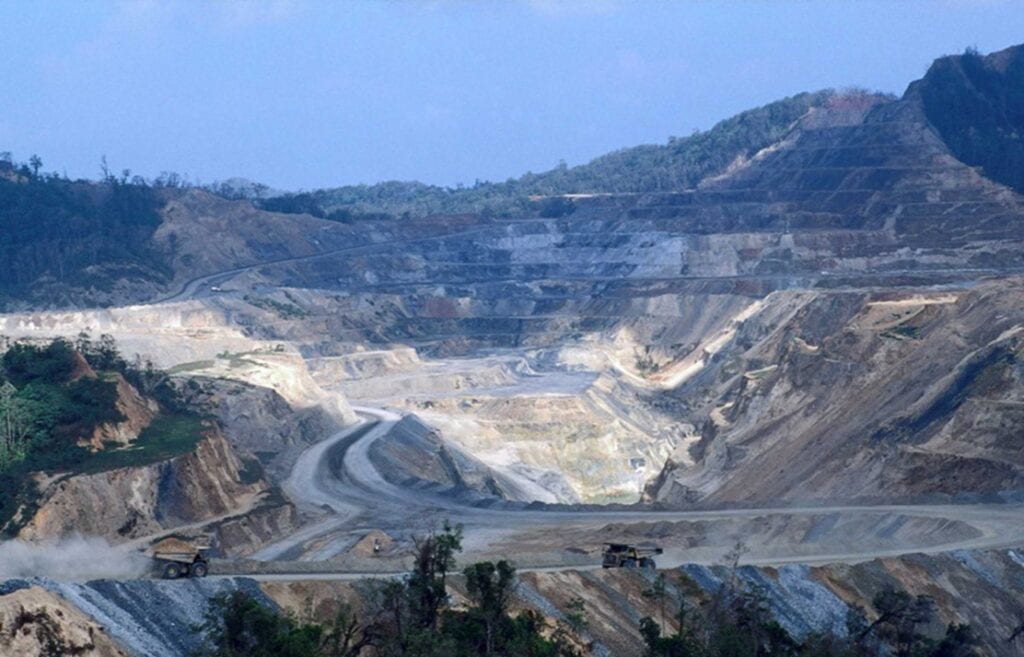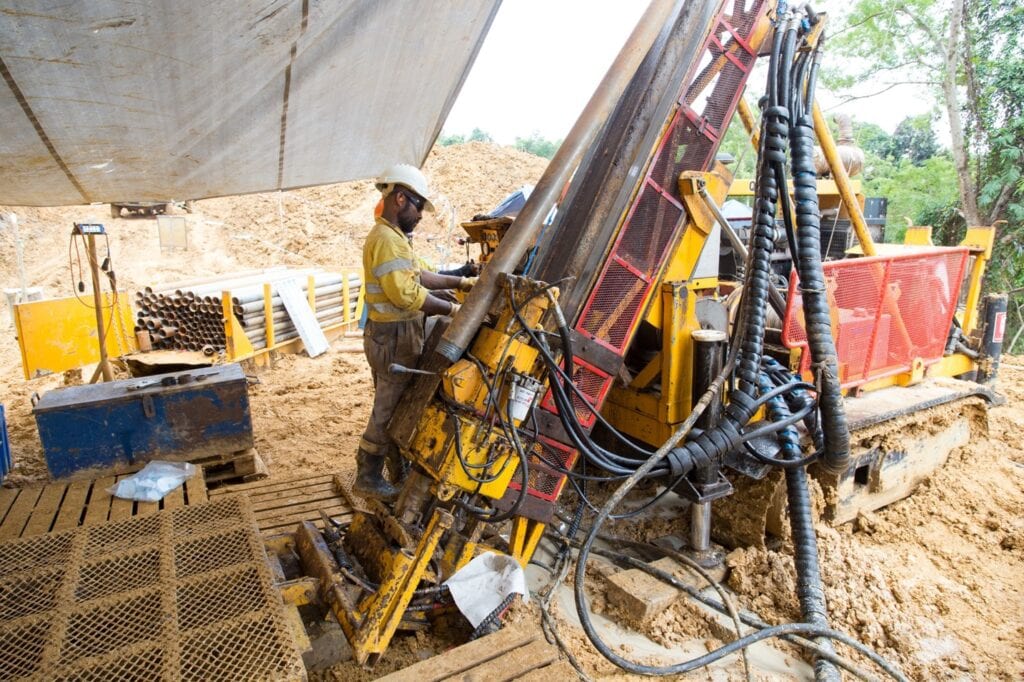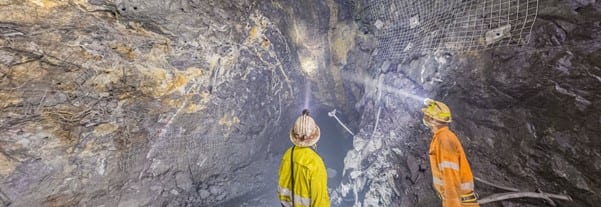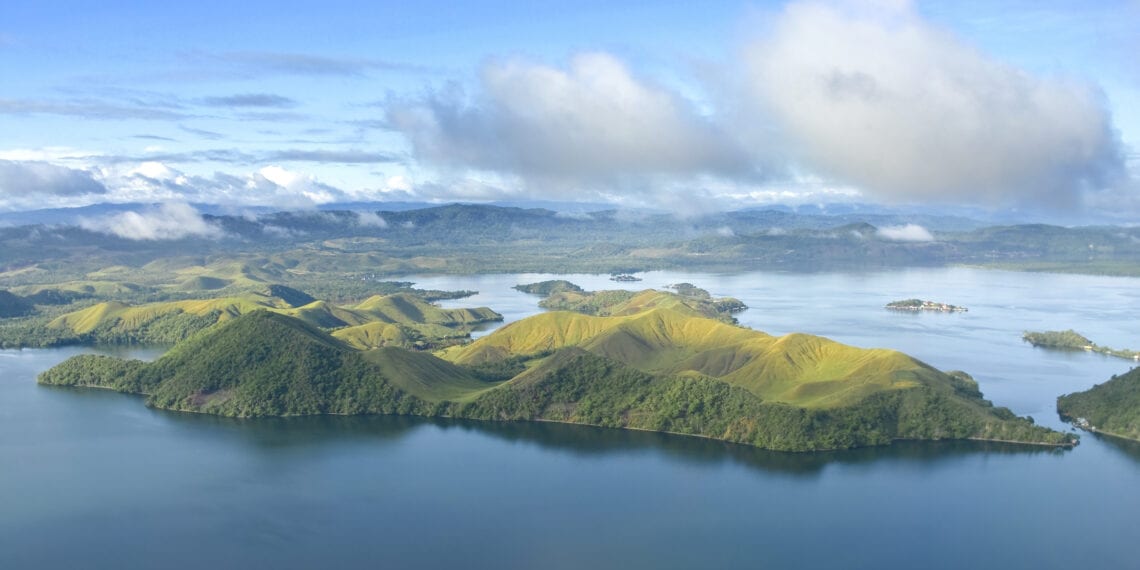Amongst the global mining sector, Papua New Guinea (PNG) is known as elephant country – the home of giant gold and copper developments and discoveries. World class operations such as Porgera, Lihir, Ok Tedi and the Panguna mine on Bougainville, and giant discoveries such as Wafi-Golpu and Frieda River, have dominated the mining history of the richly endowed nation.
PNG has also been the stamping ground of giant miners such as BHP, CRA, Rio Tinto, Placer, Newcrest, Harmony, and Barrick – which have led the gold producing space in PNG for decades.
Now, a new wave of junior miners is making a name for themselves as they move towards establishing the next phase of PNG gold project development.
Canada’s K92 Mining Inc. (TSX: KNT) at Kainantu in the Eastern Highlands, Kingston Resources (ASX: KSN) on Misima Island and Geopacific Resources (ASX: GPR) on Woodlark Island are leading the way in refreshing PNG’s golden history.
With so much mineral riches, it is no surprise that PNG has been the home for a number of world-renowned gold rushes, and these three “new” developments can trace their history back to much earlier discoveries.
The earliest explorers
Gold was first discovered on Misima by Europeans 130 years ago when gold rush miners visited the then remote islands off the southern tip of the PNG mainland. In the late 1800s, British administrator, William MacGregor, used sailing vessel HMS Swinger to take miners prospecting on islands off the coast of the PNG mainland, eventually leading to the discovery of gold on Misima in late 1888.
This led to a mini gold rush, which was followed by a similar occurrence in 1895 at Woodlark with the discovery of rich new pockets of gold on the Solomon Sea island.
Lode mining for gold began on Woodlark in 1900 and on Misima in 1904, with both Islands successfully remaining in production until World War II and the arrival of the Japanese army in the region.
Misima
Significant mining activity returned to Misima in 1989 when Placer Dome commenced a major gold and silver operation. The world-class open pit gold mine produced 3.7 million ounces at an average cost of US$218/ounces before closing in 2004.
While local artisanal miners remained in action, it looked like large-scale mining was at an end, leaving the local population looking for a saviour to bring much needed jobs and cash back to the island.
That white knight came in the unexpected shape of junior miner, Kingston Resources.
Led by Managing Director, Andrew Corbett – part of a dynasty of famous mining names in PNG – Kingston acquired an initial interest in Misima in 2017, before formally moving to full ownership in March 2021.
Now, the company is fast-tracking development of the next phase of large-scale Misima production behind a combination of ongoing drilling success and an improved gold price.

The company has hit the ground running in 2021 on the back of a number of key events including the unveiling of an outstanding Pre-Feasibility Study (PFS), the release of a maiden 1.35Moz Ore Reserve and a successful A$13 million raising.
Key components of the PFS included:
- 130,000 oz pa average annual gold production over a 17-year mine life
- 5.5 Mtpa mining and processing operation on a brownfields site with extensive mining history
- Low capital intensity with A$283m CAPEX including A$37m contingency
- Life-of-mine (LOM) average AISC of A$1,159/oz
- LOM revenue of A$4.9B. LOM free cash-flow of A$1.5B
- Pre-tax Net Present Value (NPV8%) of A$822m and 33% IRR at US$1,600/oz gold price. Pre-tax Net Present Value (NPV8%) of A$1.28B and 48% IRR at spot US$1,900/oz gold price
- A payback period of 4.7 years at US$1,600/oz gold price, reduced to 2.75 years at US$1,900/oz
The company is now on target with its plans to complete a Definitive Feasibility Study, with Mr Corbett recently telling shareholders that the company is well-placed to achieve its “goal of becoming a substantial new mid-tier Asia-Pacific gold producer.”
Mine development construction is currently underway.
Woodlark
While Woodlark never graduated to a major mining level after its World War II shutdown, that all looks set to change thanks to another Australian junior miner, Geopacific Resources.
Geopacific first made a move on the Woodlark Island Gold Project in mid-2017 and graduated to 100% ownership in mid-2019.
Thanks to an aggressive drilling programme, Geopacific has lifted Woodlark’s proven reserves to 28.9 Mt of ore containing 1.04 Moz of gold grading 1.12 g/t Au.

A recent Project Execution Update has presented the Woodlark Gold Project as a compelling +1-million-ounce gold development project.
Key outcomes of the Project Execution Update included:
- Post-tax NPV8 increased 76% to $347M (US$253M), IRR of 34% at a gold price of $2,200/oz (US$1,606/oz)
- Forecast average AISC of $1,239/oz (US$904/oz) over life of mine
- 13-year mine life and significant exploration potential
- +1Moz Ore Reserve underpinning open pit mine plan with simple 2.4 Mtpa Carbon-In-Leach (CIL) process plant
- Total estimated establishment capital of $254.8M (US$186M) – rapid post-tax payback of 1.8 years
Mine development construction is currently underway, including the purchase of the first tranche of mining equipment in late March 2021.
Kainantu
While Kainantu is a relative newcomer with its discovery in the Eastern Highlands in 1928, it is well ahead in the current development race.
Like Misima and Woodlark, Kainantu has had a mixed mining history. Serious mining began with the start-up of underground operations in 2006. However, technical issues, landowner threats and a dropping gold price saw operator Highlands Pacific shut the mine down three years later.
The operation was then acquired by Placer Dome and then Barrick Gold before being purchased by Canada’s K92 Mining for US$62 million in 2014.
Since acquiring the project from Barrick and restarting operations in late-2016, K92 has transformed Kainantu into a rapidly expanding producer and mineral resource. Production has also been low cost, which is a testament to the high grade, continuity, solid thickness, geotechnical and metallurgical characteristics of the deposit.

The transformation has been driven by a series of near-mine infrastructure exploration discoveries, with K92 continuing an aggressive campaign of underground drilling that has extended the current resource estimate area over an area of approximately 1,250 metres along strike by 1,050 to 1,150 metres vertically representing ~75% of the drill target area.
Once considered by some locals to be a troubled operation, Kainantu is now a shining light in PNG’s mining sector, with a State Delegation, including PNG Prime Minister, James Marape, the Governor of the Eastern Highlands Province, Peter Numu, and PNG Mining Minister, Johnson Tuke, recently taking time out of their busy schedules to meet with K92 representatives during a site visit to the Kainantu Gold Mine.












